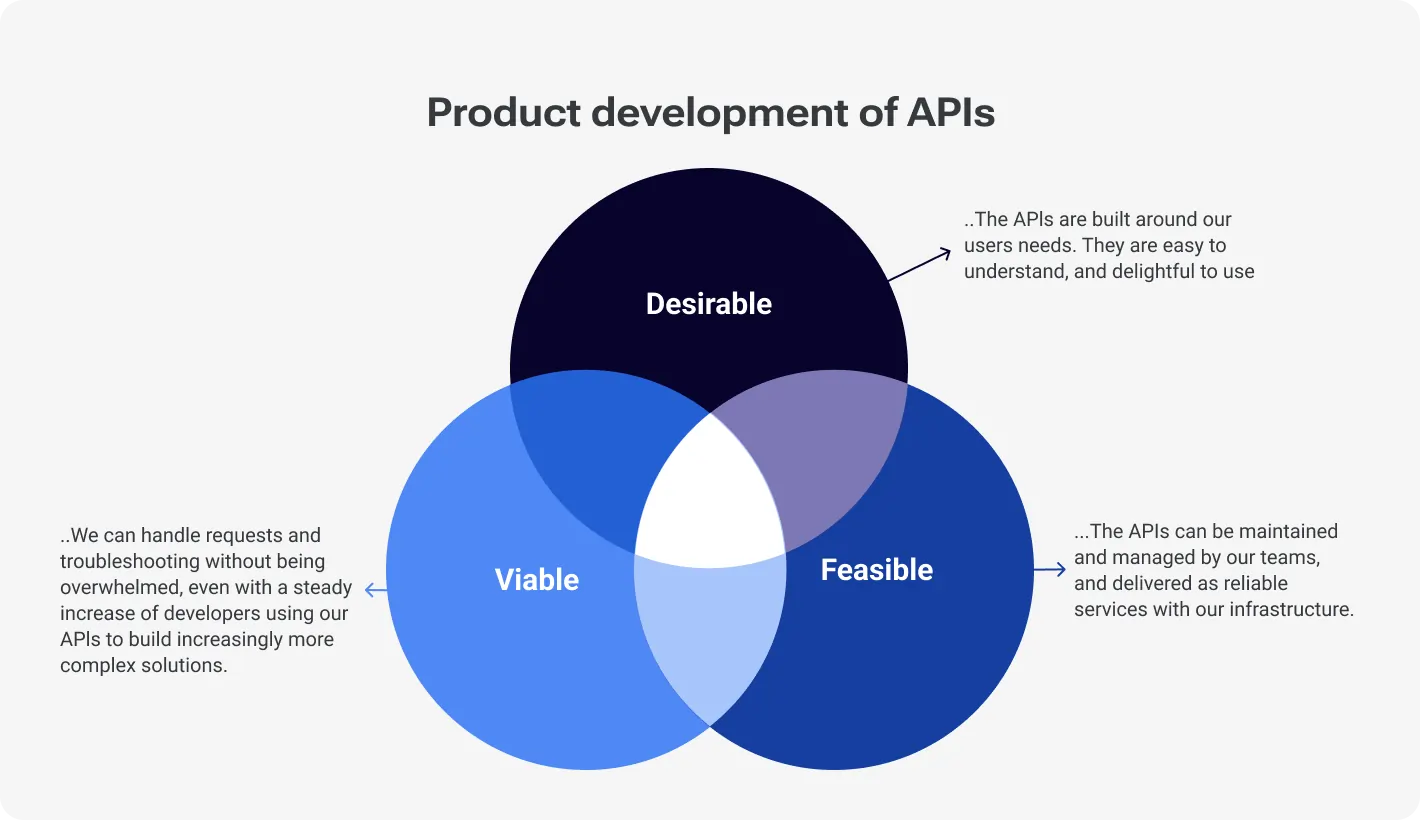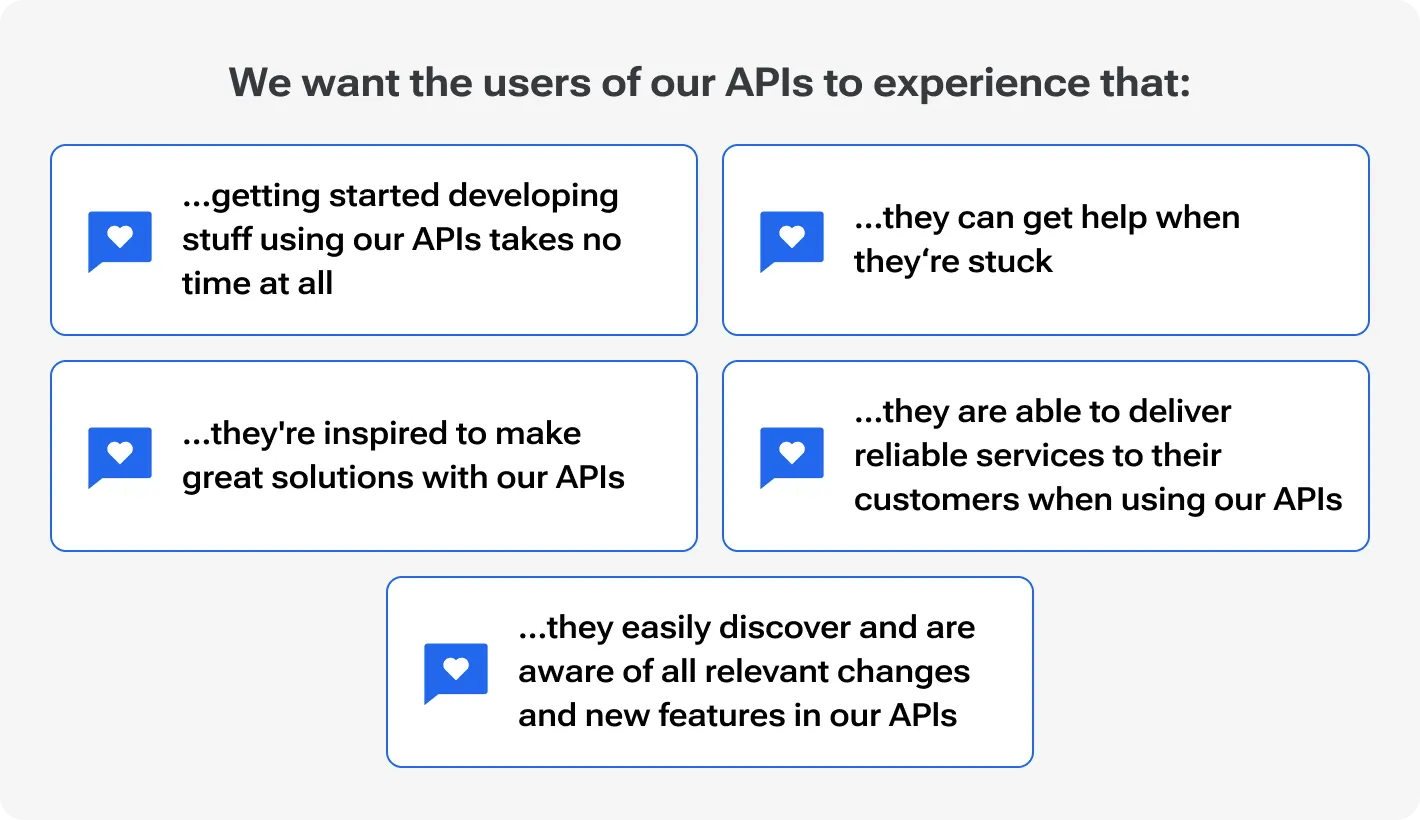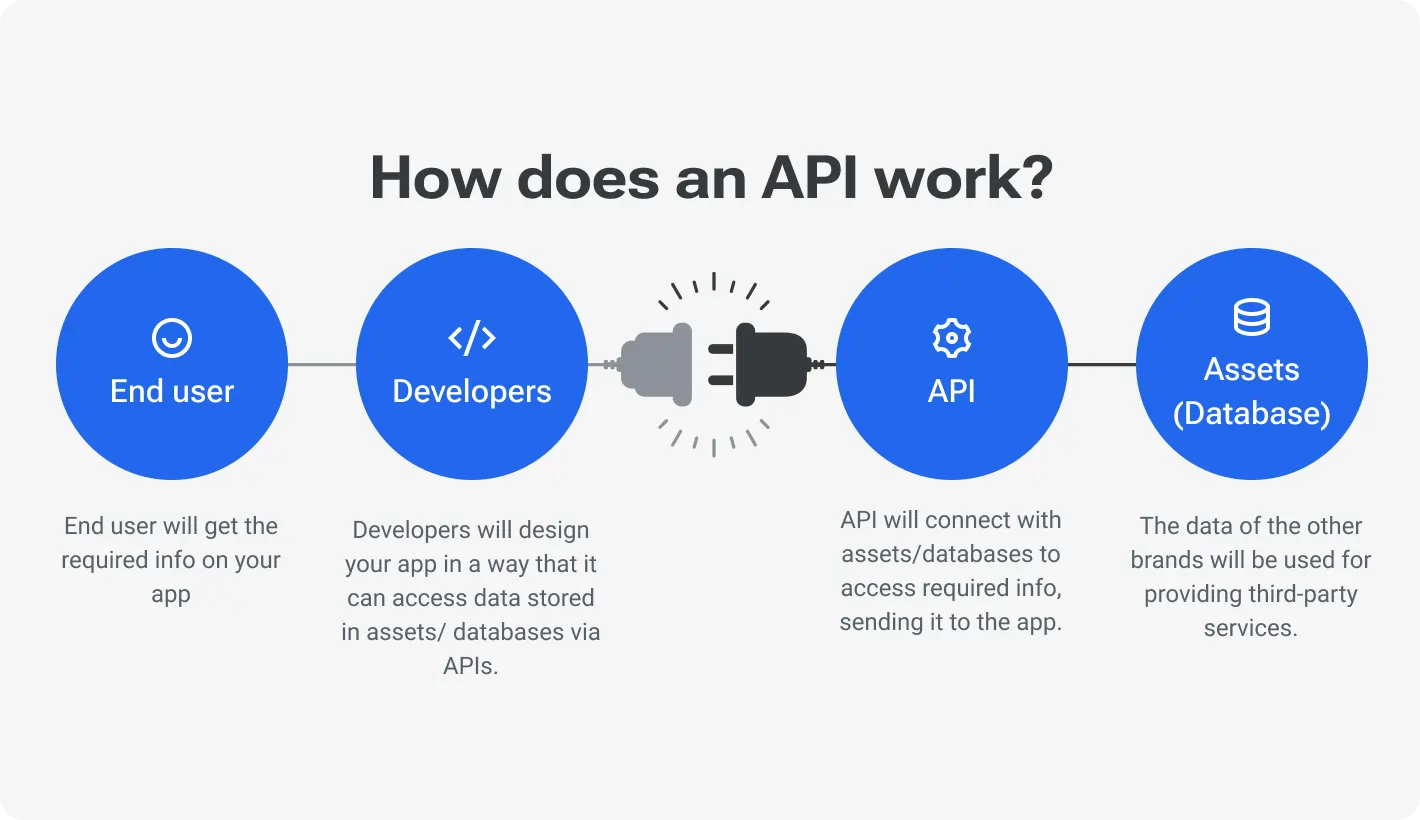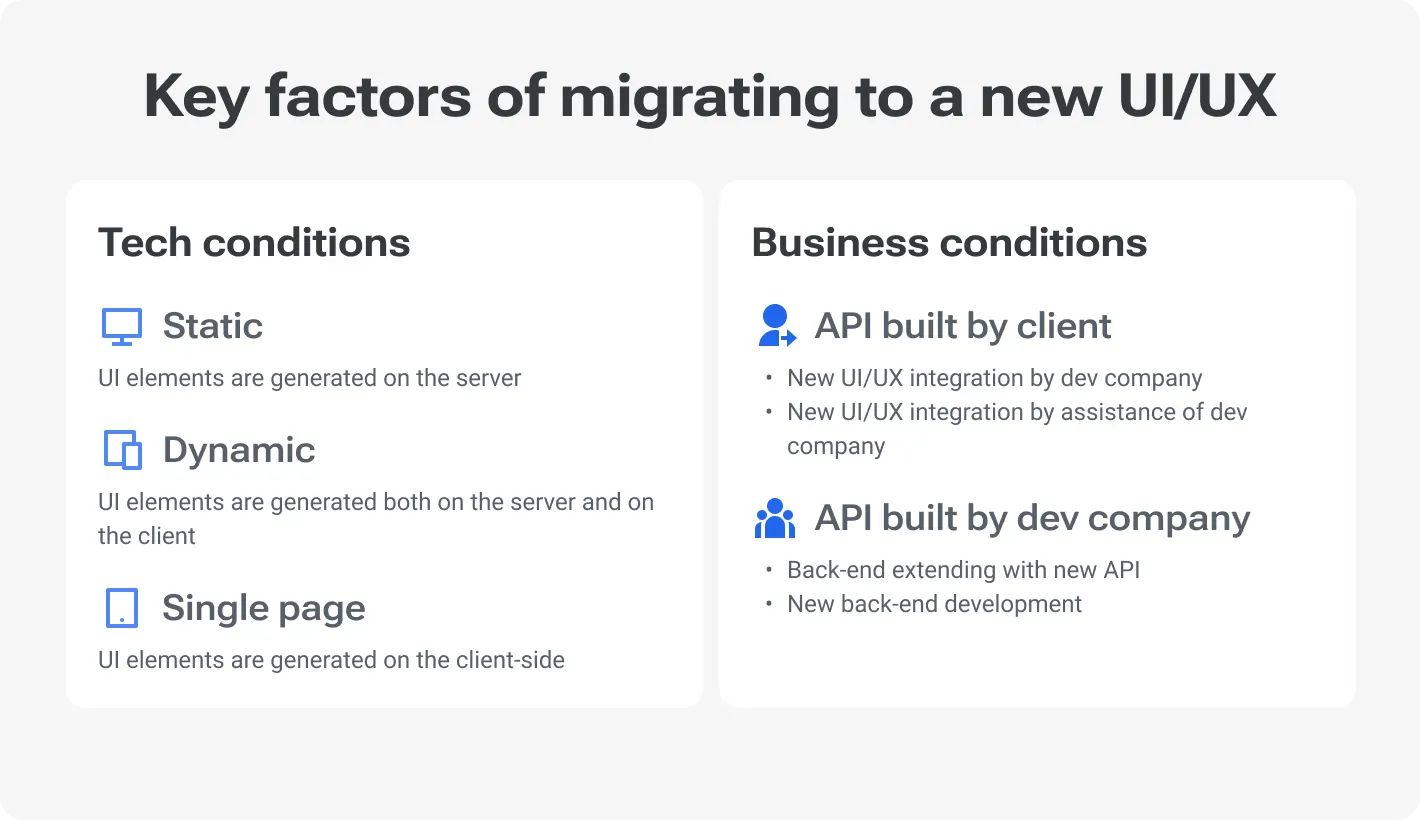Outsourcing to Czechia

How much does it cost to hire developers in Czechia?
Dec 2nd 25 - by Devico Team
Find out how much it costs to hire software developers in Czechia in 2025. Compare hourly rates, roles, and factors that impact pricing.
Hire
Hire by role
Hire Front-end developers
Hire Back-end developers
Hire Full-stack developers
Hire Android developers
Hire iOS developers
Hire Mobile developers
Hire AI engineers
Hire ML engineers
Hire Automation QA engineers
Hire Blockchain developers
Hire Data engineers
Hire Cloud engineers
Hire by skill
Hire JavaScript developers
Hire TypeScript developers
Hire Ruby on Rails developers
Hire React Native developers
Hire Flutter developers
Hire Golang developers
Hire React.js developers
Hire Python developers
Hire PHP developers
Hire .NET developers
Hire Java developers
Hire Laravel developers

API development
January 07, 2025 - by Devico Team
Summarize with:
Every dollar invested in UX brings 100 in return - that's an ROI of 9,900%. Indeed, investing in UX cannot be the wrong solution for any business. What is the fastest and most efficient way to do it? Through using API integration and making the most out of API solutions for user experience.

This article is aimed to explore the use of API for developing better UX in all aspects of your platform or application. We will cover benefits of API integration for UX, practical implementation tips, and real-world examples of a successful API-driven UX.
API, which is an abbreviation for Application Programming Interface, is a universal method of connecting multiple software types and simplifying their interactions. Whenever you need two or more websites or applications to communicate seamlessly and exchange data, API is the best possible helping hand.
Consequently, no matter how small or large your clientele is, an API can also be a powerful tool for enhancing user experience. UX is not only about design solutions: usability can and should be improved until your platform is developed to its best version. APIs provide comprehensive and easily enforceable solutions for this.
For instance, when your website or app involves transactions, you can use native APIs of the payment systems for seamless integration. Thanks to just one API, your customers will be able to complete payments via any method they like in a matter of minutes. This is just a drop in the ocean of all the API capabilities. Here is more about improving UX with APIs in detail.

Using API integration is a strategic decision for any business. Since the main purpose of API is to improve customer operations by making them easier and faster, the user experience is also enhanced by the way of API implementation. We have prepared a comprehensive breakdown of the main strategic benefits of API for the UX of your platform.
Through APIs, businesses can create unified user experiences across platforms, devices, and services without the need to develop every function in-house. This leads to a faster expansion of any platform, allowing it to market and sell its products and services in a faster and more efficient manner. Here are the main points in which APIs improve the functionality of a platform or app:
APIs offer significant cost savings and efficiency gains. They give the possibility to reuse existing services or incorporate third-party tools, which eliminates the need for building every single solution from scratch.
APIs are useful in developing mobile applications based on the data of existing websites. They streamline the collection and transmission of information, promptly connecting all the dots. This helps with saving development costs and reducing maintenance efforts.
APIs foster a more adaptive digital strategy. As user behaviors change or new trends emerge, businesses that rely on APIs can adapt and introduce features that enhance the UX faster. Whether it's connecting with new data sources, enhancing communication channels, or integrating innovative technologies, APIs provide the foundation to swiftly adjust to ever-growing expectations.
A good example of how an API can automate otherwise tedious processes and save time is Devico’s recent project, a DeFi wallet. We used a GraphQL router with an API to submit data about NFT balances with blockchain parsing and off-chain NFT metadata. The API automated the process of data collection, always providing users with prompt information on their NFT balances.
One of the key advantages of API integration is its ability to facilitate the smooth incorporation of third-party services into an application or platform. By integrating third-party tools and services through APIs, businesses can offer their users access to additional features without the need for users to leave their primary platform.

Many websites allow users to log in via social media accounts, a feature made possible by API integration with OAuth services. For instance, on Shopify, you can use your Apple ID, Facebook, or Google Account. These simplified and enhanced login methods were made possible thanks to APIs, which made the communication between Shopify and social media platforms possible.
Such a use case of API integration holds many benefits for developers and business owners alike:
For developers, APIs provide a way to extend their portfolios without building features from scratch. For example, a developer building a travel platform can use APIs to integrate accommodation booking solutions, currency converters, car rental systems, and weather data, allowing users to access all relevant services in one place.
The API integration eliminates the need to search for information in different places, instead, users can find everything they might be interested in within one website or application.
Seamless API integration can enhance customer loyalty. When users encounter third-party service integrations, especially the ones they are well-acquainted with, their trust in your brand automatically increases.
In contrast, forcing users to jump between platforms or manually input the same data across different services can create a disjointed experience. This is why using APIs to harmoniously combine several solutions in one ecosystem is always a good idea for any business.
The best way to resonate with clients and their needs is to personalize your website or app in such a way that it meets the demands of your target audience. Thanks to APIs, data collection from user interactions and behavior has become easier than ever. For example, streaming services like Netflix use APIs to gather data about what users watch and recommend similar content based on that data. Spotify and other music streaming platforms, in turn, collect this data to create personalized playlists.
Almost every single platform you know uses an API to a certain extent to make its services tailored to the tastes of each individual customer. People tend to favor those websites and apps that seem to know exactly what they want to buy, watch, read, listen to, and so on. This type of personalization creates a more engaging and satisfying experience, as users feel that the platform is responding to their unique preferences and needs. In addition to that:
APIs enable real-time adjustments based on user behavior. A recommendation engine can access various data sources via APIs to deliver highly personalized suggestions without delay. This approach leads to increasing customer loyalty.
Personalization through APIs offers some strategic business benefits. Once a business understands what customers want, it can create targeted ads and promotions, as well as improve customer support.
You don’t have to wait until the data you need is collected: once you integrate an API, it collects all the information in real time. In this way, you can promptly respond to the relevant requests of your users.
Customization is at the core of a successful user experience. Instead of running surveys or conducting the data collection manually, you can rely on an API to automate each step of the process for you.
Real-time data access is essential in today’s digital landscape, enabling businesses to provide up-to-date information and responsive interactions through API-driven solutions.
APIs facilitate the integration of real-time data streams, allowing applications to access and process information instantly, which is critical for industries that rely on time-sensitive data.
Devico has experience using API to provide platforms and applications with real-time data access services. Efficient data collection allows traders to make informed decisions and act on them promptly. In one of our latest projects, Datasport, we used API features to collect and manage data concerning relevant events in the sports industry. In this way, we simplified event management and the registration process for participants.
Real-time data also enhances user interactions by ensuring that applications remain responsive to user actions. For example, social media platforms like X (formerly Twitter) use APIs to provide real-time updates on tweets, mentions, and trends. When a user refreshes their feed or interacts with the platform, the API fetches the latest data, ensuring that users see the most current information available. This immediacy keeps users engaged and encourages them to interact more frequently with the platform.
Now that we have acquainted you with the benefits of API integration for your platform’s user experience, the question is: how can you implement this in practice? In our experience, the process of API integration is most efficient when split into clear, consistent steps. Here is what we usually do when planning to foster user experience with an API.
Your API roadmap: Strategies for successful deployment
A clear understanding of user expectations is a must. Depending on the project type and client requirements, we conduct a deep analysis of the pain points that users might come across. The main question to ask here is what problem do they seek to solve? Once we identify the issue, we tailor an API solution that addresses it in the most efficient way.
In Devico partnership with Mode, the main goal was to create a digital finance app that would be comprehensive for those customers who are less knowledgeable in FinTech and especially operations in crypto. GraphQL, a query language for APIs, was used to establish clear and uninterrupted communication between the front-end and back-end, thus combining the complex structure of the app with a smooth and responsive design.
Whenever you select an API for a particular project or purpose, it is important to make sure that it aligns both with the business purposes and user experience goals. First, it is important to have at least a basic insight into different types of APIs and their functions. Understanding what each type of API does will help you choose the one that suits your needs best.
We at Devico often resort to GraphQL, Facebook’s native API, to seamlessly connect the back-end and front-end features of a website or application. GraphQL provides a single endpoint for data queries, allowing clients to obtain all the data they need within one request. In addition, it is versionless, which means that it is possible to bring any needed changes into the API without disrupting its existing functionality.
GraphQL is opposed to the REST APIs, which use multiple endpoints for data collection and might not be suitable for all types of integrations. In order to achieve the best experience possible for your clients, choose the API type whose description and functions suit your project best and only then act on the integration process.
To achieve a seamless API integration, design with the user experience in mind. The integration should feel like a natural extension of your application rather than a disconnected feature. The best way to do this is to ensure that all your design elements (color schemes and typography, for example) are consistent across all the API-driven components.
The path to smooth API integration: Expert tips and tricks
Think about the user journey: it must not only be simple and comprehensive but also aesthetically pleasing without being persistent. Make sure that API calls occur in the background without interrupting the user flow. For example, when integrating a payment gateway, the transaction process should be streamlined to avoid losing users at critical points.
The user journey only begins after API integration and here’s when you have to streamline all your efforts to achieve a consistently good performance. The best way to do this is via testing. Functional testing will help you ensure that the API behaves as planned under different conditions. Then, user acceptance testing will help you gather feedback from actual customers who have already interacted with the API.
This real-world insight is indispensable for identifying conflicting areas or misfires in the process of API integration. When you test your API and collect feedback promptly, you will be able to debug and improve the integrated systems without disrupting the user experience.
Once the API integration is live, ensure regular monitoring. It will help you soberly estimate ongoing performance and overall user satisfaction. Use monitoring tools to track response times, error rates, and user engagement. Any anomalies in these metrics will indicate issues that you need to work on for a smooth user experience.
Besides, make sure to regularly review user feedback, which is priceless. In this way, you will promptly detect any existing pain points and patch up your API for better long-term performance.

Apart from having sufficient skill for API integration and understanding its benefits for user experience, it is important to use the API best practices for their harmonious coexistence. This is what we strive to do - put the user and their impression at the top of our priorities list.
Building a user-centric design means understanding the needs, pain points, and workflows of end-users to ensure the integration adds value rather than complexity. A user-centric design approach ensures that APIs are intuitive and easy to interact with, making the overall system more approachable. Poorly designed APIs can lead to frustration, errors, and overall inefficiency.
When you design with your end-user in mind, you think about enduring clear endpoints and easy-to-follow workflows. Besides, you have to minimize the need for technical expertise to use the API. Usability testing is a great tool in this regard. When users have positive experiences, they are more likely to continue using the system and recommend it to others.
Maintaining a consistent user interface (UI) and user experience (UX) across different systems and services is of unmatched importance for seamless API integration. Consistency simplifies learning, as users don’t have to adapt to new patterns every time they switch between different services.
For example, using similar naming conventions, error-handling methods, and interaction models across various API services helps users navigate the system more efficiently. It also reduces cognitive load and helps build familiarity and user trust with the system.
Inconsistent designs can confuse users and lead to mistakes, particularly when dealing with complex data flows or business processes. Consistency also extends to design aesthetics, language, and even the performance of the system, ensuring that the experience feels unified and smooth.
Security and privacy are paramount when integrating APIs, especially when dealing with sensitive user data or financial transactions. APIs are often gateways to critical data and services, so they must adhere to strict security protocols to prevent breaches and data leaks. Measures like authentication, encryption, and secure transmission (using HTTPS, for instance) are necessary to protect the data during transit.
Additionally, privacy laws such as GDPR and CCPA require that APIs handle user data responsibly, ensuring that data collection, storage, and sharing practices comply with legal standards. This is another core business value of APIs: they can greatly enhance trustability through elevated security measures.
Designing APIs with privacy in mind from the beginning ensures that user data is only accessed or shared with authorized parties and for legitimate purposes. Security flaws in API integration can lead to significant risks, including data breaches, identity theft, and loss of user trust, which every business avoids at all costs.
Clear and comprehensive documentation is essential for anyone interacting with APIs, from developers to end-users. Well-written documentation helps users understand how to integrate APIs, troubleshoot issues, and maximize the functionality of the system. Good documentation includes detailed descriptions of API endpoints, example requests and responses, error codes, and usage guidelines.
It also makes the integration process smoother, reducing the back-and-forth between developers and support teams. Alongside documentation, providing robust support channels (like forums, FAQs, and help desks) ensures that users can get assistance when they run into problems. Without proper documentation and support, even the most well-designed API can become difficult to use. As a result, the adoption will be slower and increase the frustration among business owners, developers, and users alike.
APIs can and should be used for polishing up user experience. In the hands of a knowledgeable expert, an API is a powerful tool that serves multiple purposes at once: from integrating various services into one system to improving the visual perception of a website or application. While APIs are not almighty, they are indispensable when building a compelling user experience.
Contact Devico and improve the user experience of your website or app with expert advice and tailor-made solutions for your business.
Outsourcing to Czechia

Dec 2nd 25 - by Devico Team
Find out how much it costs to hire software developers in Czechia in 2025. Compare hourly rates, roles, and factors that impact pricing.
Outsourcing to Czechia

Nov 25th 25 - by Devico Team
Compare Czechia and Poland for software outsourcing in 2025. Discover costs, talent, infrastructure, and which country fits your project best.
Outsourcing to Czechia

Nov 18th 25 - by Devico Team
A complete guide to outsourcing software projects to Czechia, learn about costs, talent, benefits, and how to build successful partnerships in 2025.